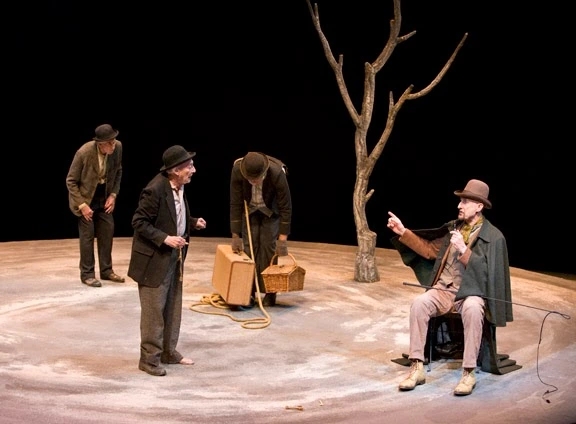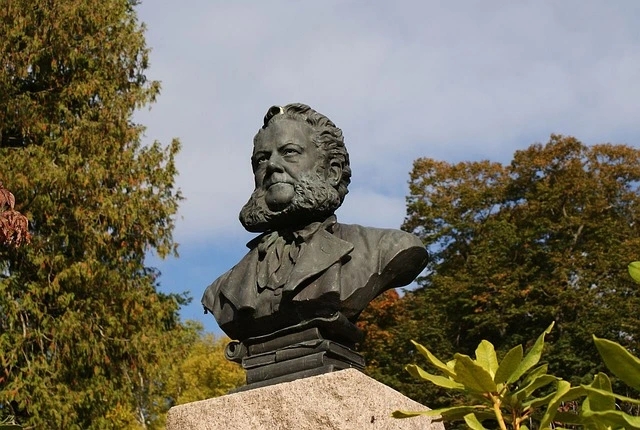Theatre of the Absurd is a term that refers to a style of theatre that emerged after World War II and is characterized by a sense of meaninglessness, absurdity and illogicality in human existence. The term was coined by the critic Martin Esslin in his 1960 essay “The Theatre of Absurd”, which focused on the works of Samuel Beckett, Arthur Adamov, Eugène Ionesco and other playwrights who shared a similar vision. Esslin defined the absurd as “that which has no purpose, goal, or objective” .
The Theatre of Absurd was influenced by the existentialist philosophy of Albert Camus, who argued in his 1942 essay “The Myth of Sisyphus” that human life is absurd and meaningless and that the only way to cope with this condition is to embrace it and rebel against it. Camus wrote: “In a universe that is suddenly deprived of illusions and of light, man feels a stranger. His is an irremediable exile because he is deprived of memories of a lost homeland as much as he lacks the hope of a promised land to come. This divorce between man and his life, the actor and his setting, is properly the feeling of absurdity”.
Elements of Absurd Drama
The Theatre of Absurd challenged the conventional notions of drama and theatre by rejecting realistic characters, settings, and plots and instead creating a world of illogicality, irrationality, and absurdity. The plays often depicted characters trapped in absurd situations, forced to perform meaningless actions or engage in nonsensical dialogue. The plays also used various techniques of comedy, such as parody, satire, farce, slapstick, and black humor, to create a contrast between the comic form and the tragic message. The Theatre of Absurd expressed this feeling of absurdity through various dramatic techniques and elements.
- Broad comedy, often mixed with tragic or horrific elements, creates a contrast between the humorous and the serious and challenging the conventional expectations of the audience. For example, in Beckett’s Waiting for Godot, the tramps’ comic routines and word games are juxtaposed with their despair and boredom, while in Ionesco’s The Bald Soprano, the characters’ laughter turns into screams and violence.
- Characters trapped in hopeless situations, forced to perform repetitive or meaningless actions, or unable to communicate with each other or the outside world. For example, in Beckett’s Endgame, the characters are confined in a room with no exit, while in Ionesco’s The Chairs, the old couple’s message is never delivered to anyone.
- Dialogues are full of clichés, wordplay, nonsense, contradictions and paradoxes, reflecting the breakdown of language and logic. For example, in Beckett’s Waiting for Godot, the tramps’ conversations are full of repetitions, interruptions and misunderstandings, while in Ionesco’s The Lesson, the professor’s teaching becomes increasingly absurd and incomprehensible.
- Plots that are cyclical, circular, or absurdly expansive, lacking a clear beginning, middle or end, or a coherent development or resolution. For example, in Beckett’s Waiting for Godot, nothing happens twice, while in Ionesco’s Rhinoceros, the whole town is transformed into rhinoceroses without explanation.
- A parody or dismissal of realism and the concept of the “well-made play”, rejecting the traditional notions of character, action, setting and time. For example, in Beckett’s Endgame, the characters have no names or backgrounds, while in Ionesco’s The Bald Soprano, the characters switch identities and roles.
Famous Absurd Plays
Following are some of the famous plays belonging to the theatre of absurd.
- Waiting for Godot (1953) by Samuel Beckett: Two tramps wait endlessly for a mysterious figure named Godot, who never arrives while engaging in absurd conversations and actions. The play is considered one of the most influential works of 20th-century theatre, as it challenged the conventions of drama and introduced a new form of theatrical expression.
- The Bald Soprano (1950) by Eugène Ionesco: A parody of a bourgeois drama in which two couples exchange meaningless banalities and nonsensical statements while their identities and relationships become increasingly confused. The play is inspired by Ionesco’s experience of learning English from a textbook that contained illogical sentences.
- The Chairs (1952) by Eugène Ionesco: An old couple prepares to deliver their life’s message to an invisible audience, represented by empty chairs, while a mute orator arrives to speak on their behalf. The play is a metaphor for the futility and isolation of human existence.
- Rhinoceros (1959) by Eugène Ionesco: A town is invaded by rhinoceroses,
as the inhabitants gradually transform into these animals, except for one man who resists the metamorphosis. The play is an allegory for the rise of fascism and conformity in Europe during the 1930s and 1940s. - Endgame (1957) by Samuel Beckett: Four characters live in a bleak room with two windows facing a desolate landscape. They engage in futile dialogues and movements while waiting for an end that never comes. The play reflects the meaninglessness and absurdity of life in a post-apocalyptic world.
- The Lesson (1951) by Eugène Ionesco: A professor teaches a young pupil various subjects, from arithmetic to linguistics, while becoming increasingly violent and irrational until he kills her with a knife. The play is a satire of education and language’s authoritarian and oppressive nature.
- The Dumb Waiter (1957) by Harold Pinter: Two hitmen wait in a basement for their next assignment while receiving mysterious orders from a dumb waiter. The play is a study of the power dynamics and communication breakdown between the two men, as well as a critique of the violence and absurdity of their profession.
The Theatre of Absurd was not a unified movement or school but a loose category encompassing diverse playwrights who shared common themes and techniques. Other playwrights often associated with the Theatre of Absurd are Jean Genet, Edward Albee, Tom Stoppard, Fernando Arrabal, Václav Havel, Slawomir Mrozek and Dario Fo. The Theatre of Absurd had a significant impact on the development of modern theatre, as it opened new possibilities for experimentation and expression and challenged the audience to question their assumptions and expectations about theatre and life.





Leave a comment